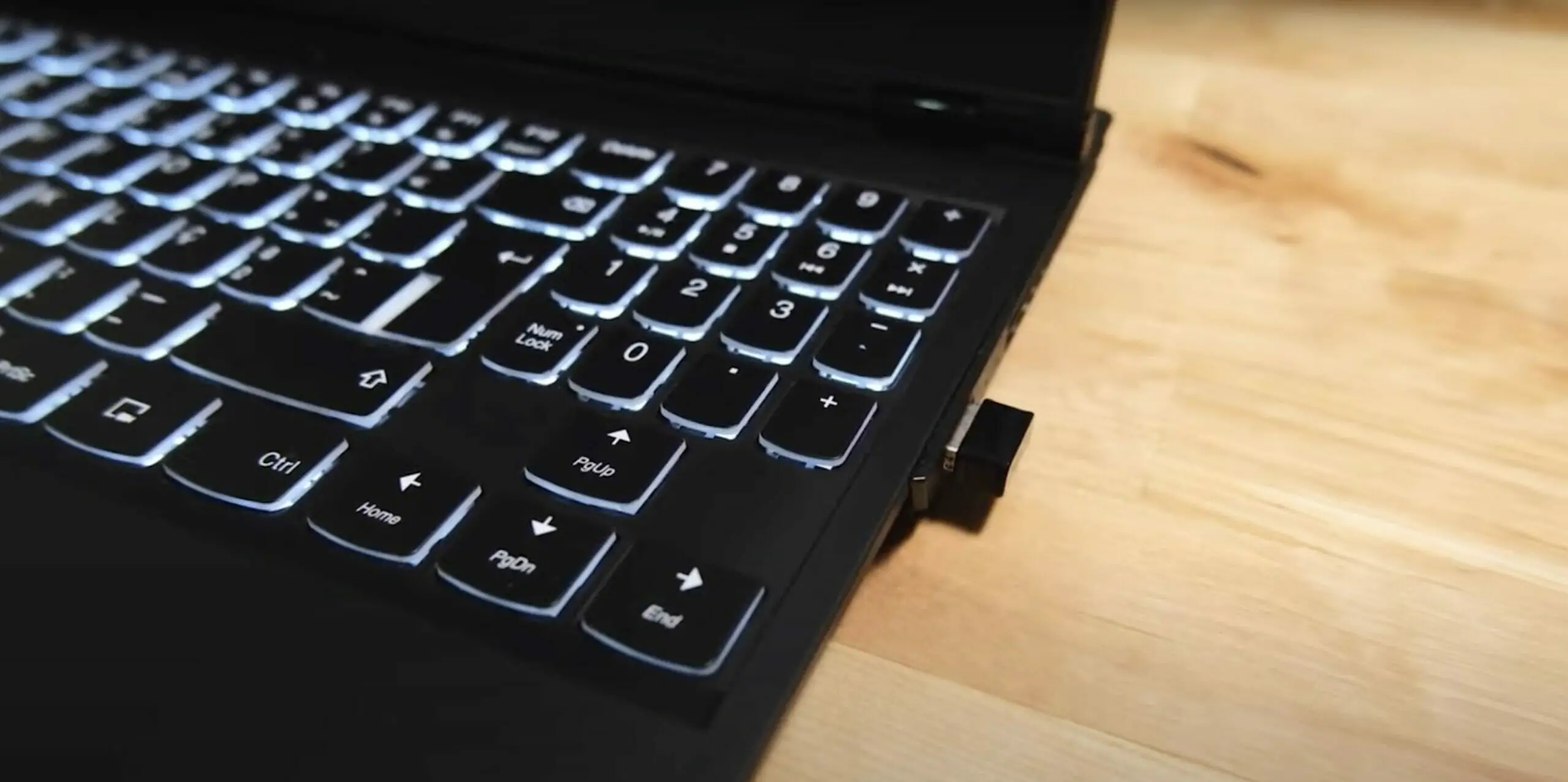You might be wondering, what exactly is a wireless adapter? I’ll be happy to break it down for you.
Wireless adapters are nifty little devices allowing our computers to connect to the internet without a cable. There are two main types: internal wireless adapters and external wireless adapters. Think of them as a digital bridge, letting your laptop or desktop communicate with your Wi-Fi router, giving you that sweet internet access we’ve come to rely on.
So, join me as I dive in-depth and uncover the workings of wireless adapters – their functionality, types, and how they influence our lives and work.
What is Wireless Adapter
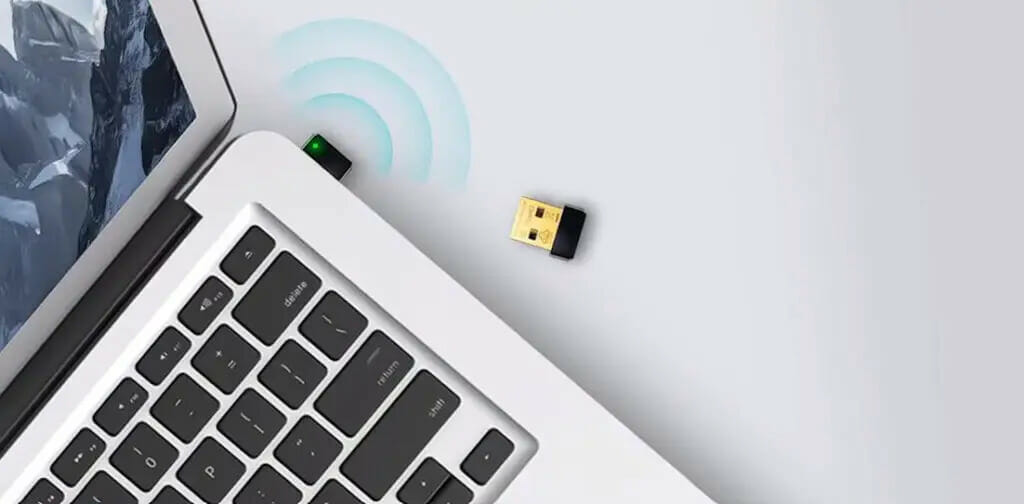
A wireless adapter is a nifty little device that can transform your computer into a wireless-capable device. It lets you ditch the network cable and wirelessly connect to the internet. The freedom it gives is worth it!
There are various types of Wi-Fi adapters, both internal and external, with different features and specifications. We’ll talk more about that later on.
How Wireless Adapters Work
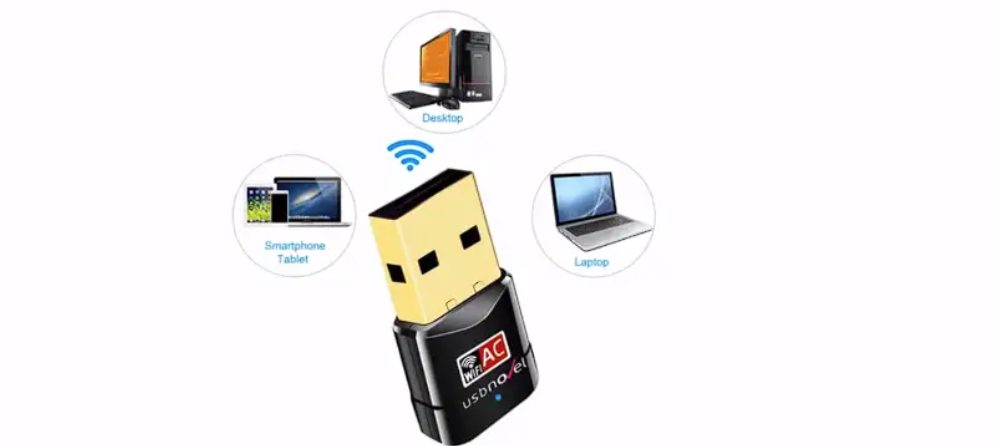
Connection Process
I first want to share how these little gadgets connect to networks. When I plug in my wireless adapter to my device, it allows me to join available Wi-Fi networks without needing an ethernet cable.
Wireless adapters are essential for devices that don’t have built-in Wi-Fi capabilities, like certain desktop computers or older laptops.
You must first install the appropriate driver software for your adapter to connect. This enables your device to recognize and communicate with the wireless adapter effectively. Once the driver is installed, your device can search for available networks and connect with the chosen Wi-Fi network.
Signal Transmission
Now let’s talk about the magic behind wireless adapters: signal transmission. When I use a wireless adapter, my device communicates with the router using radio waves.
The router then sends these signals to the internet, allowing me to access the World Wide Web from home or even a cozy coffee shop with public Wi-Fi. Wireless adapters play a big role in the quality and speed of the internet connection.
They do so by adjusting the transmission power and selecting the optimal frequency band to minimize interference from other devices. My favorite part is how my devices seamlessly switch between access points when I move around my house – without losing connection!
In summary, wireless adapters are essential for devices that lack built-in Wi-Fi and need to connect to the internet wirelessly. They make the connection process easy and enable efficient signal transmission, keeping me connected and providing a friendly browsing experience.
Types of Wireless Adapters
Let me introduce you further to wireless adapters by explaining the main types you’ll encounter. Two main types of wireless adapters are Internal Wireless Adapters and External Wireless Adapters. Let’s dive in and see what each has to offer.

| Overview | Internal Wireless Adapters | External Wireless Adapters |
|---|---|---|
| Definition | Wireless adapters are installed inside the computer. Common types include PCI and MINI-PCI. | Wireless adapters are plugged into an external port on the computer. Common types include USB and PCMCIA. |
| Advantages | They are hidden inside the device, maintaining a clean look. | They are portable and easy to use. It can be switched between different devices. |
| Disadvantages | More challenging to replace or upgrade as they are inside the device. | Depending on the external adapter type, it might use valuable USB port space. |
Internal Wireless Adapter
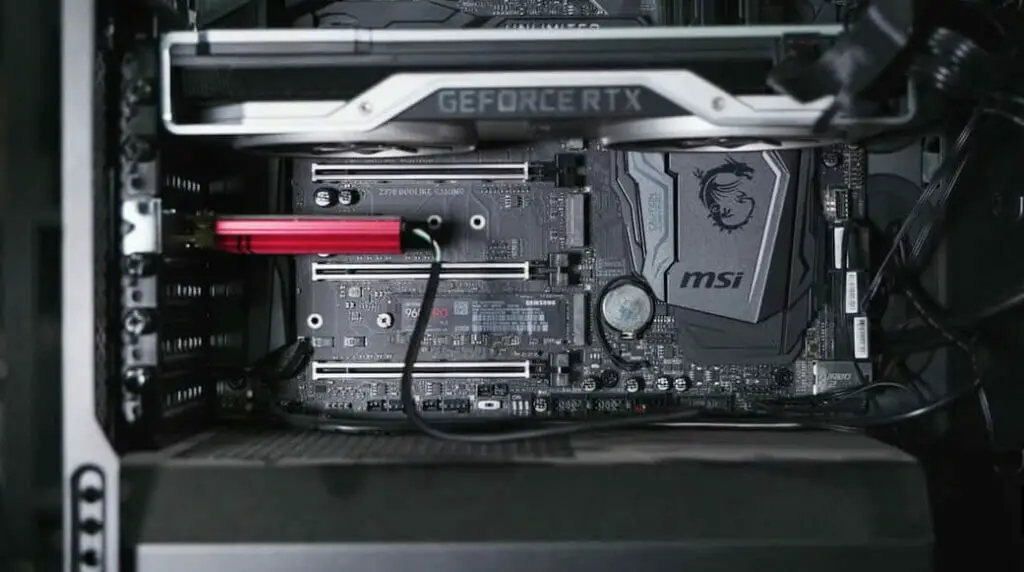
Amazingly, we can have wireless connectivity built right into our devices. An internal wireless adapter is installed within your computer or device. One common form is the PCI adapter, designed for desktop computers.
This card is inserted into a PCI slot on your computer’s motherboard. Another type is the MINI-PCI wireless adapter built into laptops, making them ready for Wi-Fi on the go.
Now, internal adapters offer the benefit of being hidden inside your device, maintaining a clean look. However, swapping it out can be more challenging if it’s time to replace or upgrade your adapter.
External Wireless Adapter
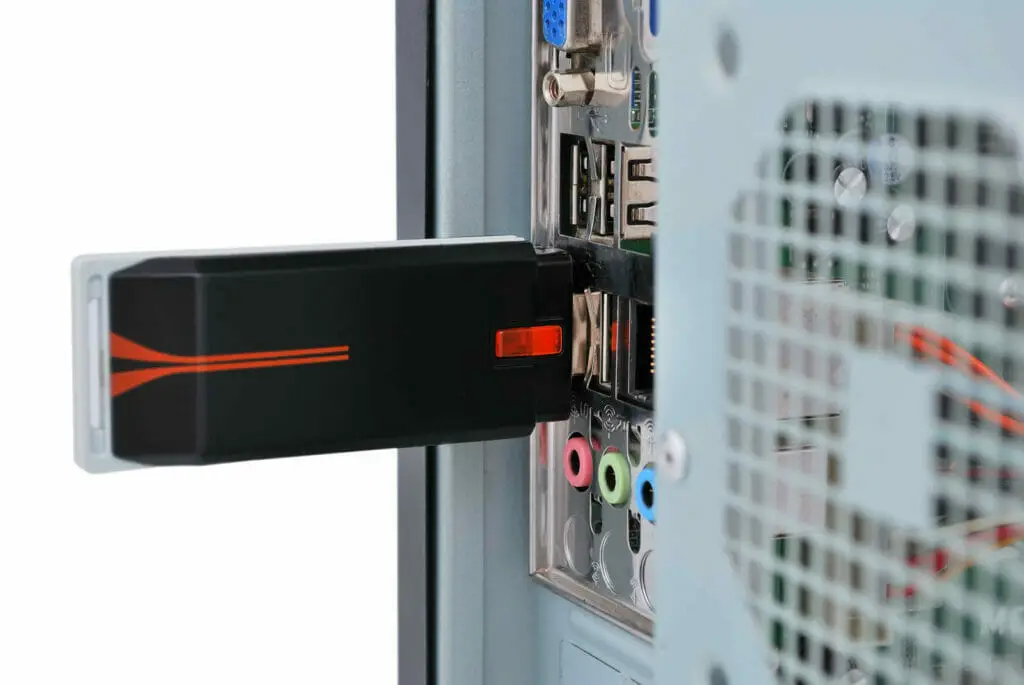
Moving on, let’s talk about external wireless adapters. These handy little devices can be plugged into your computer or other internet-capable devices, providing wireless connectivity without opening up your machine. You’ll find two popular types among external adapters: USB and PCMCIA.
USB wireless adapters are the most common these days. They are portable, easy to use, and perfect for switching between devices. Just plug it into a USB port, and you’re ready.
On the other hand, PCMCIA wireless adapters are designed for notebook computers. These adapters slide into a PCMCIA slot on your laptop, giving you wireless access without taking up valuable USB port space.
In my experience, external adapters are great for their ease of use and flexibility. If you need to replace or update your wireless connection, just unplug the old one and plug in the new one.
So there you have it – the main types of wireless adapters: internal and external.
Wireless Adapter Features
Speed and Signal Strength
Regarding wireless adapters, speed and signal strength are essential for a smooth and efficient online experience. As mentioned, a Wi-Fi adapter enables your desktop computer or laptop to connect to your home network and the internet without an ethernet cable.
This means you can access your internet in your office, bedroom, or even across the street if you have a 4G connection.
I was amazed one day when I discovered that the performance of Wi-Fi adapters depends on the Wi-Fi standard they support. For example, 802.11ac adapters provide faster speeds than their predecessors.
The latest 802.11ax (Wi-Fi 6) adapters deliver faster speeds with better range and less interference. Investing in a wireless network adapter with a higher standard can make all the difference in your online experience.
Wireless Standards
The Wi-Fi standards define the speed a wireless adapter can achieve and its compatibility with different devices, access points, and routers. Let’s take a closer look at some common Wi-Fi standards:
| Wi-Fi Standard | Speed | Frequency Band | Key Features |
|---|---|---|---|
| 802.11ax | Up to 9.6 Gbps | 2.4 GHz, 5 GHz | Faster speeds, less interference, energy-efficient |
| 802.11ac | Up to 1300 Mbps | 5 GHz | Gigabit speeds, better range |
| 802.11n | Up to 450 Mbps | 2.4 GHz, 5 GHz | Decent speeds, compatibility |
- 802.11ax (Wi-Fi 6): Wi-Fi 6 is the latest standard with incredible speed, efficiency, and lower latency. It supports faster speeds (up to 9.6 Gbps), less interference, and improved energy efficiency. It supports more simultaneous connections and is ideal for high-density environments like airports or apartment buildings.
- 802.11ac: Known as Wi-Fi 5, this standard reaches gigabit speeds (up to 1300 Mbps) and offers a better range than 802.11n. It’s a popular wireless standard that significantly improved over its predecessor, 802.11n. It operates on the 5 GHz bands, ensuring faster data transfer rates and less interference.
- 802.11n: Also known as Wi-Fi 4, this standard provides a maximum speed of (up to 450 Mbps), operating on both the 2.4GHz and 5GHz bands. It provides decent speeds and compatibility but has limitations compared to newer standards.
So, understanding Wi-Fi standards helped me choose the right wireless adapter for my needs, avoid lag, and ensure compatibility with my other devices and home network.
Plus, it ensures a reliable connection I can trust, whether working from my office or binge-watching my favorite series.
Benefits of a Wireless Adaptor
Flexibility
Wireless adapters offer incredible flexibility! You can connect to Wi-Fi networks from various locations within the network’s range. Whether you’re in your cozy bedroom, bustling office, or even enjoying the great outdoors, as long as there’s a Wi-Fi network available, you can connect wirelessly. This means you have the freedom to access the internet from different areas within your home, workplace, or even public spaces like cafes or libraries.
Convenience
Say goodbye to tangled cables and hello to convenience! With wireless adapters, you can bid farewell to the hassle of managing or untangling cables. Setting up your workspace becomes a breeze, and you can move around freely without restrictions. Imagine the ease of working or streaming your favorite shows without worrying about tripping over cables or being limited to a specific spot. It’s all about convenience!
Mobility
Wireless adapters offer you the power of mobility! Say goodbye to being tethered to a single location. With a wireless adapter, you can stay connected to the internet while on the move. Whether you’re using a laptop, tablet, or mobile device, you have the freedom to roam around and stay connected. Take your device to different rooms, collaborate with colleagues in various areas, or work remotely from any location with Wi-Fi coverage. It’s all about staying connected wherever you go!
Multiple Device Connectivity
Connectivity for everyone! Wireless adapters allow multiple devices to connect to the same Wi-Fi network simultaneously. That means smartphones, tablets, laptops, smart TVs, gaming consoles, and any other Wi-Fi-enabled devices can all be connected at the same time. No more fighting over who gets to use the internet. Everyone can enjoy seamless internet access without the need for individual wired connections. It’s all about sharing the connectivity love!
Easy Setup and Scalability
Setting up is a breeze! Wireless adapters offer easy setup and scalability. Connecting to a Wi-Fi network with a wireless adapter is a user-friendly process. Simply install the necessary drivers, select the desired network, and enter the password if required. It’s quick and hassle-free. Plus, as your needs grow, wireless adapters allow for easy network expansion. Add more devices or extend coverage by connecting additional wireless adapters or access points. It’s all about simplicity and scalability!
Versatility
Wireless adapters for everyone and every device! They come in various form factors and interfaces, making them compatible with a wide range of devices. Whether you have a desktop computer, laptop, gaming console, or smart TV, there’s a wireless adapter option to suit your needs. From convenient USB adapters that can be easily plugged into a port to internal adapters that are installed inside a computer, versatility is the name of the game. It’s all about finding the perfect fit for your device!
Improved Aesthetics
Say hello to a clean and organized setup! Wireless adapters contribute to a clutter-free and visually appealing environment. With no Ethernet cables crisscrossing your workspace, you can enjoy a neat and tidy setup. This is especially great for spaces where aesthetics matter, such as home offices or public areas. It’s all about creating a visually pleasing and enjoyable working or browsing experience!
References
Organizations:
- The Wi-Fi Alliance. https://www.wi-fi.org/
Websites:
- TechRadar. https://www.techradar.com/
- CNET. https://www.cnet.com/
- PCMag. https://www.pcmag.com/
Video References
Consumer Buddy
One Hut
The RT4

